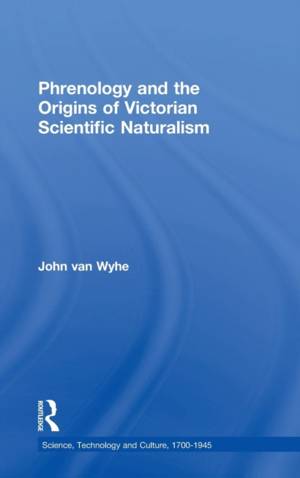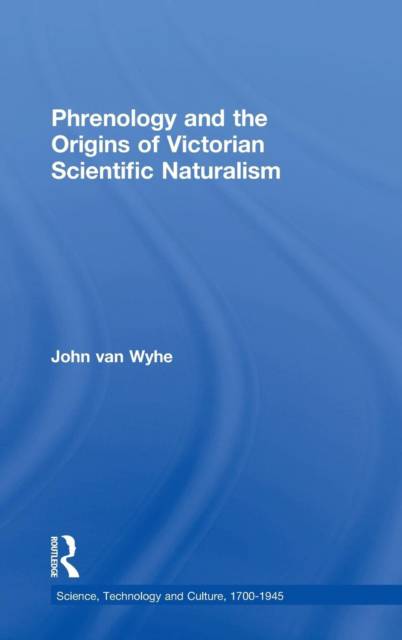
- Retrait gratuit dans votre magasin Club
- 7.000.000 titres dans notre catalogue
- Payer en toute sécurité
- Toujours un magasin près de chez vous
- Retrait gratuit dans votre magasin Club
- 7.000.0000 titres dans notre catalogue
- Payer en toute sécurité
- Toujours un magasin près de chez vous
Phrenology and the Origins of Victorian Scientific Naturalism
John Van Wyhe
305,45 €
+ 610 points
Format
Description
Through a reassessment of phrenology, Phrenology and the Origins of Victorian Scientific Naturalism sheds light on all kinds of works in Victorian Britain and America which have previously been unnoticed or were simply referred to with a vague 'naturalism of the times' explanation. It is often assumed that the scientific naturalism familiar in late nineteenth century writers such as T.H. Huxley and John Tyndall are the effects of a 'Darwinian revolution' unleashed in 1859 on an unsuspecting world following the publication of The Origin of Species. Yet it can be misleading to view Darwin's work in isolation, without locating it in the context of a well established and vigorous debate concerning scientific naturalism. Throughout the nineteenth century intellectuals and societies had been discussing the relationship between nature and man, and the scientific and religious implications thereof. At the forefront of these debates were the advocates of phrenology, who sought to apply their theories to a wide range of subjects, from medicine and the treatment of the insane, to education, theology and even economic theories. Showing how ideas about naturalism and the doctrine of natural laws were born in the early phrenology controversies in the 1820s, this book charts the spread of such views. It argues that one book in particular, The Constitution of Man in Relation to External Objects (1828) by George Combe, had an enormous influence on scientific thinking and the popularity of the 'naturalistic movement'. The Constitution was one of the best-selling books of the nineteenth century, being published continuously from 1828 to 1899, and selling more than 350,000 copies throughout the world, many times more than Dawin's The Origin of Species. By restoring Combe and his work to centre stage it provides modern scholars with a more accurate picture of the Victorians' view of their place in Nature.
Spécifications
Parties prenantes
- Auteur(s) :
- Editeur:
Contenu
- Nombre de pages :
- 300
- Langue:
- Anglais
- Collection :
Caractéristiques
- EAN:
- 9780754634089
- Date de parution :
- 28-03-04
- Format:
- Livre relié
- Format numérique:
- Genaaid
- Dimensions :
- 156 mm x 234 mm
- Poids :
- 598 g

Les avis
Nous publions uniquement les avis qui respectent les conditions requises. Consultez nos conditions pour les avis.






